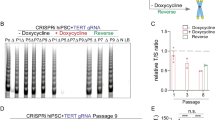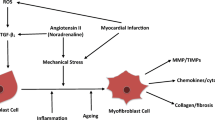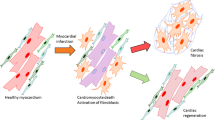Abstract
Hypertrophic growth is a response of the heart to increased mechanical load or physiological stress. Thereby, cardiomyocytes grow in length and/or width to maintain cardiac pump function. Major signaling pathways involved in cardiomyocyte growth and remodeling have been identified during recent years including calcineurin–NFAT and PI3K–Akt signaling. Modulation of these pathways is of certain interest for therapeutic treatment of cardiac hypertrophy. However, quantification and characterization of hypertrophy in response to different stimuli or modulators is difficult. This study aims to test different read-out systems for detection and quantification of differences in hypertrophic growth in response to prohypertrophic stimuli. Real-time impedance measurements allowed the detection of distinct differences in hypertrophic growth in response to endothelin, norepinephrine, phenylephrine or BIO, which were not observable by other methods such as flow cytometry. Endothelin treatment induced a rapid and strong peak in the impedance signal concomitant with a massive reorientation of the actin cytoskeleton. Changes in expression of hypertrophy-associated genes were detected and stabilization of β-catenin was identified as a common response to all hypertrophic stimuli used in this study. Hypertrophic growth was blocked by the PI3K/mTOR inhibitor PI-103.




Similar content being viewed by others
References
Antos CL, McKinsey TA, Frey N, Kutschke W, McAnally J, Shelton JM, Richardson JA, Hill JA, Olson EN (2002) Activated glycogen synthase-3 beta suppresses cardiac hypertrophy in vivo. Proc Natl Acad Sci USA 99:907–912
Aoyagi T, Matsui T (2011) Phosphoinositide-3 kinase signaling in cardiac hypertrophy and heart failure. Curr Pharm Des 17:1818–1824
Baurand A, Zelarayan L, Betney R, Gehrke C, Dunger S, Noack C, Busjahn A, Huelsken J, Taketo MM, Birchmeier W, Dietz R, Bergmann MW (2007) β-Catenin down-regulation is required for adaptive cardiac remodeling. Circ Res 100:1353–1362
Claycomb WC, Lanson NA, Stallworth BS, Egeland DB, Delcarpio JB, Bahinski A, Izzo NJ (1998) HL-1 cells: a cardiac muscle cell line that contracts and retains phenotypic characteristics of the adult cardiomyocyte. Proc Natl Acad Sci USA 95:2979–2984
Cullingford TE, Butler MJ, Marshall AK, Tham EL, Sugden PH, Clerk A (2008) Differential regulation of Krüppel-like factor family transcription factor expression in neonatal rat cardiac myocytes: effects of endothelin-1, oxidative stress and cytokines. Biochim Biophys Acta 1783:1229–1236
Dowling RJO, Topisirovic I, Alain T, Bidinosti M, Fonseca BD, Petroulakis E, Wang XS, Larsson O, Selvaraj A, Liu Y, Kozma SC, Thomas G, Sonenberg N (2010) mTORC1-mediated cell proliferation, but not cell growth, controlled by the 4E-BPs. Science 328:1172–1176
Fang D, Hawke D, Zheng Y, Xia Y, Meisenhelder J, Nika H, Mills GB, Kobayashi R, Hunter T, Lu Z (2007) Phosphorylation of β-catenin by Akt promotes β-catenin transcriptional activity. J Biol Chem 282:11221–11229
Haq S, Choukroun G, Knag ZB, Ranu H, Matsui T, Rosenzweig A, Molkentin JD, Alessandrini A, Woodgett J, Hajjar R, Michael A, Force T (2000) Glycogen synthase kinase-3β is a negative regulator of cardiomyocyte hypertrophy. J Cell Biol 151:117–130
Haq S, Michael A, Andreucci M, Bhattacharya K, Dotto P, Walters B, Woodgett J, Kilter H, Force T (2003) Stabilization of β-catenin by a Wnt-independent mechanism regulates cardiomyocyte growth. Proc Natl Acad Sci USA 100:4610–4615
Harvey PA, Leinwand LA (2011) Cellular mechanisms of cardiomyopathy. J Cell Biol 194:355–365
Heineke J, Molkentin JD (2006) Regulation of cardiac hypertrophy by intracellular signalling pathways. Nat Rev Mol Cell Biol 7:589–600
Koshman YE, Piano MR, Russell B, Schwertz DW (2010) Signaling responses after exposure to 5 alpha-dihydrotestosterone or 17 beta-estradiol in norepinephrine-induced hypertrophy of neonatal rat ventricular myocytes. J Appl Physiol 108:686–696
Kuwahara K, Saito Y, Nakagawa O, Kishimoto I, Harada M, Ogawa E, Miyamoto Y, Hamanaka I, Kajiyama N, Takahashi N, Izumi T, Kawakami R, Tamura N, Ogawa Y, Nakao K (1999) the effects of the selective ROCK inhibitor, Y27632, on ET-1-induced hypertrophic response in neonatal rat cardiac myocytes—possible involvement of Rho/ROCK pathway in cardicac muscle cell hypertrophy. FEBS Lett 452:314–318
Kuwahara K, Kinoshita H, Kuwabara Y, Nakagawa Y, Usami S, Minami T, Yamada Y, Fujiwara M, Nakao K (2010) Myocardin-related transcription factor A is a common mediator of mechanical stress- and neurohumoral stimulation-induced cardiac hypertrophic signaling leading to activation of brain natriuretic peptide gene expression. Mol Cell Biol 30:4134–4148
Lamore SD, Kamendi HW, Scott CW, Dragan YP, Peters MF (2013) Cellular impedance assays for predictive preclinical drug screening of kinase inhibitor cardiovascular toxicity. Toxicol Sci 135:402–413
Lee CH, Inoki K, Guan KL (2007) mTOR pathway as a target in tissue hypertrophy. Annu Rev Pharmacol Toxicol 47:443–467
Lu J, McKinsey TA, Nicol RL, Olson EN (2000) Signal-dependent activation of the MEF2 transcription factor by dissociation from histone deacetylase. Proc Natl Acad Sci USA 97:4070–4075
Molkentin JD, Lu JR, Antos CL, Markham B, Richardson J, Robbins J, Grant SR, Olson EN (1998) A calcineurin-dependent transcriptional pathway for cardiac hypertrophy. Cell 93:215–228
Nishikimi T, Maeda N, Matsuoka H (2006) The role of natriuretic peptides in cardioprotection. Cardiovasc Res 69:318–328
Roshan-Moniri M, Young A, Reinheimer K, Rayat J, Dai LJ, Wanrock GL (2015) Dynamic assessment of cell viability, proliferation and migration using real time cell analyzer system (RTCA). Cytotechnology 67:379–386
Rosner M, Fuchs C, Siegel N, Valli A, Hengstschläger M (2009) Functional interaction of mammalian target of rapamycin complexes in regulating mammalian cell size and cell cycle. Hum Mol Genet 18:3298–3310
Shiojima I, Sato K, Izumiya Y, Schiekofer S, Ito M, Liao R, Colucci WS, Walsh K (2005) Disruption of coordinated cardiac hypertrophy and angiogenesis contributes to the transition to heart failure. J Clin Invest 115:2108–2118
Sinha D, Wang Z, Ruchalski KL, Levine JS, Krishnan S, Lieberthal W, Schwartz JH, Borkan SC (2005) Lithium activates the Wnt and phosphatidylinositol 3-kinase Akt signaling pathways to promote cell survival in the absence of soluble survival factors. Am J Physiol Renal Physiol 288:F703–F713
Stiber JA, Seth M, Rosenberg PB (2009) Mechanosensitive channels in striated muscle and the cardiovascular system: not quite a strech anymore. J Cardiovasc Pharmacol 54:116–122
Weiske J, Albring KF, Huber O (2007) The tumor suppressor Fhit acts as a repressor of β-catenin transcriptional activity. Proc Natl Acad Sci USA 104:20344–20349
Xi B, Wang T, Li N, Ouyang W, Zhang W, Wu J, Xu X, Wang X, Abassi YA (2011) Functional cardiotoxicity profiling and screening using the xCELLigence RTCA Cardio System. J Lab Autom 16:415–421
Xiao G, Mao S, Baumgarten G, Serrano J, Jordan MC, Roos KP, Fishbein MC, MacLellan WR (2001) Inducible activation of c-myc in adult myocardium in vivo provokes cardiac myocyte hypertrophy and reactivation of DNA synthesis. Circ Res 89:1122–1129
Yang M, Lim CC, Liao R, Zhang X (2007) A novel microfluidic impedance assay for monitoring endothelin-induced cardiomyocyte hypertrophy. Biosens Bioelectron 22:1688–1693
Zhang CL, McKinsey TA, Chang S, Antos CL, Hill JA, Olson EN (2002) Class II histone deacetylases act as signal-responsive repressors of cardiac hypertrophy. Cell 110:479–489
Acknowledgments
This work was funded by the Deutsche Forschungsgemeinschaft (DFG FOR1054, HU881/6-1 and DR498/1-2). We are very grateful to Prof. William Claycomb for providing the HL-1 cells. We thank Silke Lindemüller for helpful support in experimentation.
Author information
Authors and Affiliations
Corresponding author
Electronic supplementary material
Below is the link to the electronic supplementary material.
Rights and permissions
About this article
Cite this article
Bloch, L., Ndongson-Dongmo, B., Kusch, A. et al. Real-time monitoring of hypertrophy in HL-1 cardiomyocytes by impedance measurements reveals different modes of growth. Cytotechnology 68, 1897–1907 (2016). https://doi.org/10.1007/s10616-016-0001-3
Received:
Accepted:
Published:
Issue Date:
DOI: https://doi.org/10.1007/s10616-016-0001-3




